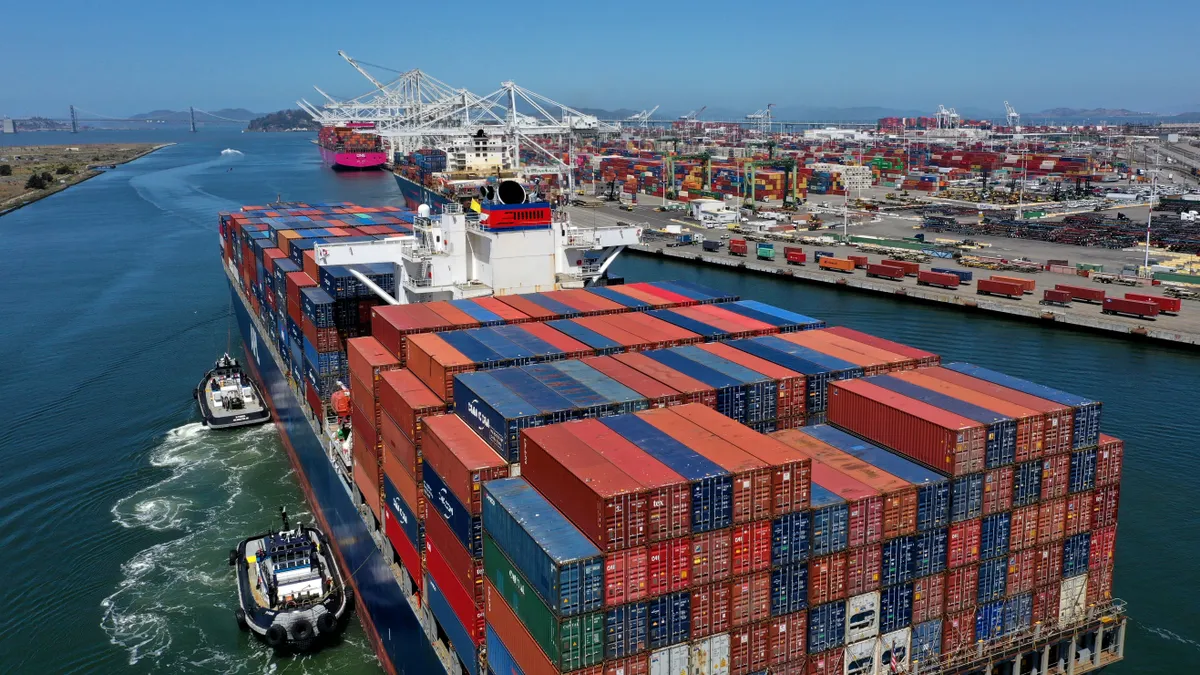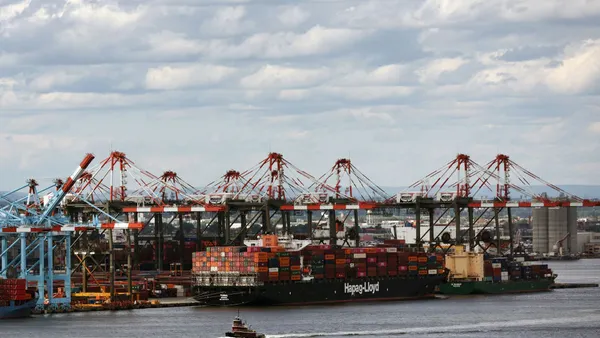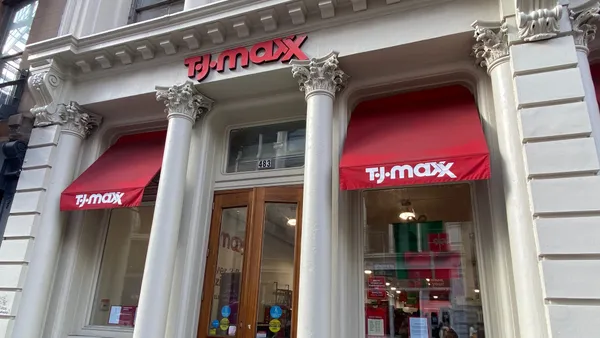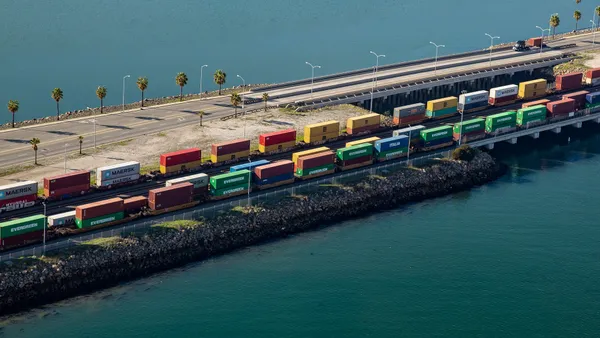Dive Brief:
- The U.S. Department of Agriculture will pay farmers for each agricultural shipment they export using the Port of Oakland or Northwest Seaport Alliance in a bid to encourage exports as volumes continue to drop, according to an announcement in late May.
- Agricultural shippers will receive $200 for every container of farm goods exported out of the ports. Exporters using refrigerated containers will get $400, and shippers in Oakland can receive an extra $125 for each pickup of an empty container.
- The incentive will be made available through the end of 2022. Shippers can apply for the relief until Jan. 31, 2023, the USDA said.
Dive Insight:
The USDA's new program is meant to offset some of the expenses agriculture shippers are facing. Carriers have shifted service schedules to bypass certain West Coast ports, which has contributed to export declines.
“While USDA’s per-container reimbursements will not cover the full cost of moving and storing shipping containers, the assistance provided will help ensure American-grown agricultural products can once again efficiently move through supply chains to reach global markets,” USDA Secretary Tom Vilsack said in a statement.
Port of Oakland Maritime Director Bryan Brandes said June 2 that the initiative will "go a long way in helping ag exporters," but added the port still needs "shipping lines to bring back vessel service to Oakland to address the high demand of export volume."
Major carriers have bypassed the ports in Oakland, Seattle and Tacoma, Washington due to congestion and scheduling issues, and are only just restarting service.
For example, Hapag Lloyd, which had omitted Oakland from certain routes for months, will once again make calls at the port for service to Asia, New Zealand and Australia beginning in mid-June. Still, service remains limited — the carrier announced in March it would replace service connecting Oakland to Latin America and the Mediterranean with a plan to ship through Norfolk, Virginia, and use rail to transport products to the West Coast.
Aubrey Bettencourt, president and CEO of the Almond Alliance, said shifts in Hapag Lloyd’s Mediterranean service specifically “added an extra wrinkle” for almond exporters looking to get their products to Germany, the sector’s second largest market.
Around 60% of U.S. nut exports went through Oakland in 2017, and less reliable service has left producers scrambling for ways to store excess product.
"It just gets harder for us when our services into Oakland are disappearing, not increasing," said Aubrey Bettencourt, president and CEO of the Almond Alliance. "Congestion is one thing, but not having the services out of there is a whole other thing entirely."
As of mid-May, producers had approximately 1 billion pounds — or 34,000 containers' worth — of almonds to move out of the U.S. by July to make room for the next harvest. Some shippers have taken to building Costco-like warehouses to store all their extra exports, Bettencourt said.
Delays in exports come at a major cost as shippers don't get paid until delivery. Bettencourt said rampant inflation has also affected the value of product that's been sitting waiting to be exported for almost a year. The alliance estimates the almond industry has lost $2 billion in price degradation alone.
Some shippers have taken to transporting almonds by truck to places like Houston, and the Alliance has worked with ports in Los Angeles and Stockton, California, to find more options for export.
“For us to transition to anything else is a huge cultural shift,” said Bettencourt. “It would be much easier to go back in and out of Oakland, but we just don't have the resources there right now to do it.”















